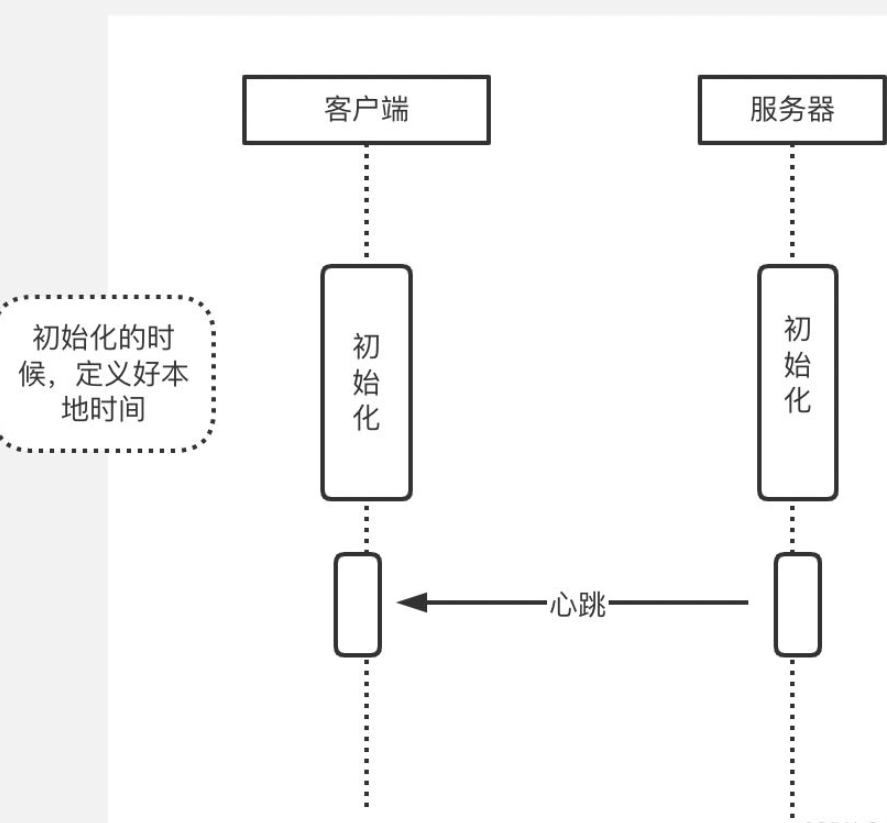这篇文章主要介绍了go语言心跳超时怎么实现的相关知识,内容详细易懂,操作简单快捷,具有一定借鉴价值,相信大家阅读完这篇go语言心跳超时怎么实现文章都会有所收获,下面我们一起来看看吧。
本文描述的是客户端接收心跳信息的超时实现。心跳超时,或者接受信息超过限定时间在分布式系统中出现的次数比较多。常见的就有hadoop中节点超时,或者日志中出现timeout的字样。
这种方法实现心跳,需要对go语言中的channel和select case 机制有所了解。select代码段中没有包含default条件时,会一直阻塞到有通道操作。
需要注意的是!!!! select语言只会阻塞一次,且执行一次。如果需要多次判断,或者可能有多个case条件需要满足,那就需要增加for语句。
首先需要知道的是select是专为channel设计的,所以说每个case表达式都必须是包含操作通道的表达式。下面这段代码是描述了随机抽取一个channel发消息,正常情况下,不会触发超时。为了触发超时,注释掉通道发送数据操作。超时五秒,则触发超时。
package main
import (
"fmt"
"math/rand"
"time"
)
func main() {
// 准备好三个通道。
intChannels := [3]chan int{
make(chan int, 1),
make(chan int, 1),
make(chan int, 1),
}
// 随机选择一个通道,并向它发送元素值。
index := rand.Intn(3)
fmt.Printf("The index: %d\n", index)
//‼️ 取消这行代码的注视,超时条件的选择就会触发。
//intChannels[index] <- index
// 哪一个通道中有可取的元素值,哪个对应的分支就会被执行。
select {
case <-intChannels[0]:
fmt.Println("The first candidate case is selected.")
case <-intChannels[1]:
fmt.Println("The second candidate case is selected.")
case elem := <-intChannels[2]:
fmt.Printf("The third candidate case is selected, the element is %d.\n", elem)
case <-time.After(5 * time.Second):
fmt.Println("timed out")
}
}通过time.sleep()实现超时操作,是比较巧妙的。一般来说心跳超时是一个双方交互的行为。
下面画一个图来描述一下。

为了方便理解,定义双方都使用共同时间。
下面是代码。
基本的逻辑是:
1、先给客户端设置一个下次超时的时间
2、客户端每次收到心跳的时候,更新这个时间
3、开启一个独立的线程,一致判断当前客户端是否超时。
ps:结合时效和性能,可以间隔一定的时间来进行判断。
package main
import (
"fmt"
"sync"
"time"
)
type Client struct {
lock sync.Mutex //加锁
nextTimeOutTime time.Time //下次超时时间
}
const tenSec = 10
/**
刷新每次的心跳超时机制
*/
func (client *Client) freshTimeOutTime() {
client.lock.Lock()
defer client.lock.Unlock()
client.nextTimeOutTime =time.Now().Add(tenSec*time.Second)
}
//开启一个gp,每隔500ms判断有没有超时
func (client *Client) judgeTimeOut() {
for {
time.Sleep(500*time.Millisecond)
fmt.Printf("%v 在判断是否超时\n", client.nextTimeOutTime)
if time.Now().After(client.nextTimeOutTime) {
fmt.Printf("%v 超时了\n", client.nextTimeOutTime)
}
}
}
//客户端收到以后,修改下次心跳超时时间
func (client *Client) receiveHeart() {
client.freshTimeOutTime()
}
//开启一个模拟ping 客户端的线程
func pingClient(client *Client) {
for true {
time.Sleep(11*time.Second)
fmt.Printf("%v 请求发送时间\n", time.Now())
client.receiveHeart()
}
}
func main() {
client := Client{
lock: sync.Mutex{},
nextTimeOutTime: time.Time{},
}
//在当前时刻,更新下次的超时时刻是10s中后
client.freshTimeOutTime()
go pingClient(&client)
go client.judgeTimeOut()
for true {
}
}关于“go语言心跳超时怎么实现”这篇文章的内容就介绍到这里,感谢各位的阅读!相信大家对“go语言心跳超时怎么实现”知识都有一定的了解,大家如果还想学习更多知识,欢迎关注亿速云行业资讯频道。
亿速云「云服务器」,即开即用、新一代英特尔至强铂金CPU、三副本存储NVMe SSD云盘,价格低至29元/月。点击查看>>
免责声明:本站发布的内容(图片、视频和文字)以原创、转载和分享为主,文章观点不代表本网站立场,如果涉及侵权请联系站长邮箱:is@yisu.com进行举报,并提供相关证据,一经查实,将立刻删除涉嫌侵权内容。